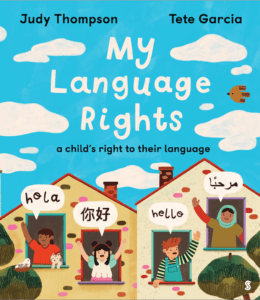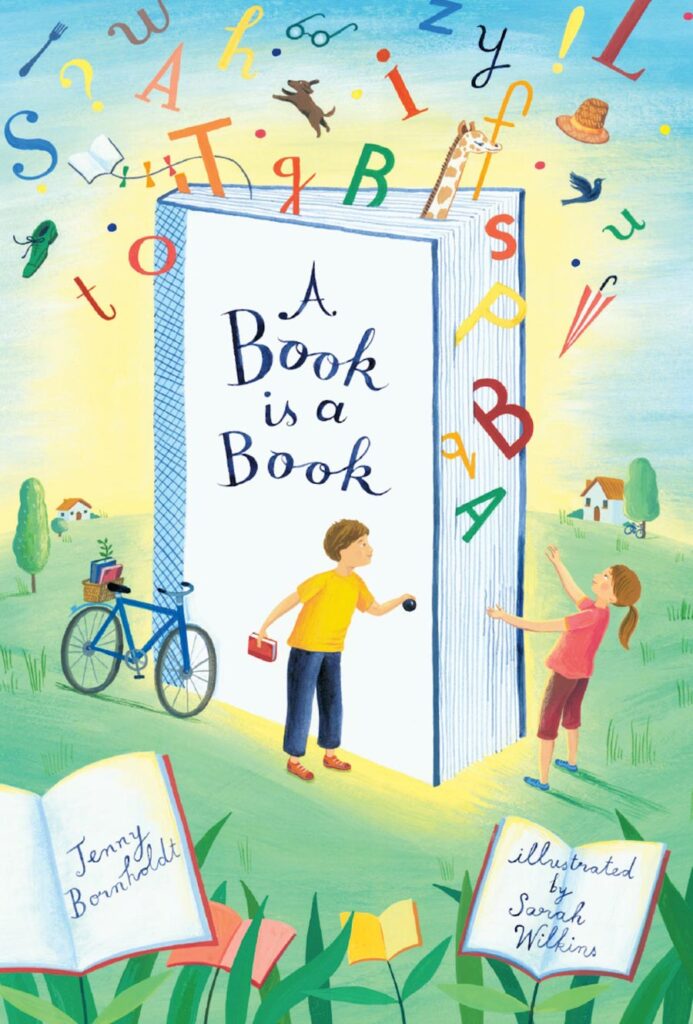Judy Thompson (text) and Tete Garcia (illustrator), My Language Rights: a child’s right to their language, Scribble, February 2025, 32 pp., RRP $24.99 (hbk), ISBN 9781761380488
On the first page of this timely book, there are four seated smiling children, putting up their hands and together they are saying, Language is the way I speak who I am to the world. The children are from different backgrounds, but they seem to be united. The premise of unity in diversity and the power of language in creating harmony is built early on.
In the first few pages of the book, the importance of language for the individual, family and community is explained simply. Without using the term ‘collective unconscious’ the role of language and stories in our memory is touched upon gently. The children are joined by other children and adults and the bright floral settings indicate the happiness language brings to the lives of everyone. The reader then sees the word ‘hello’ written in four different scripts by the children who are clearly neighbours.
Halfway through the book, the tone changes to one of loss and grief as a child holds a sheet of paper with some of the letters of the word ‘forgotten’ slipping away from the sheet of paper. This sense of loss is compounded by the tear on the face of the child indicating the detriment caused to society when languages become extinct or simply not spoken.
Then begins the high modality of the rest of the book with statements that use and repeat the word ‘should’. The first person narrative is used in making these statements stronger, more personal and thus they become pleading sentences in search of something that is missing. The illustrations of children carrying books, dancing in a book and twirling around the globe indicate awe and wander further compounded by the musicality of letters from different languages dancing around the pages.
Towards the end of the book, it becomes obvious that the children are protesting for a cause. They want equal rights to all languages. On the final page, the children are all looking up to a frame and it inspires the readers to wonder why linguistic rights which are globally supported are still not recognised as a fundamental right in international law. An endearing element of the book is the abundance of colour and the various depictions of children with differing abilities making the book have an appeal to a wider range of audiences.
This book will appeal to 6+ years and it can be appreciated as a picture book and a non-fiction text. It contains accurate information about the Universal Declaration of Human Rights still not having provisions for languages. It will be a wonderful choice to open any discussion about language and identity.
Reviewed by H I Cosar





